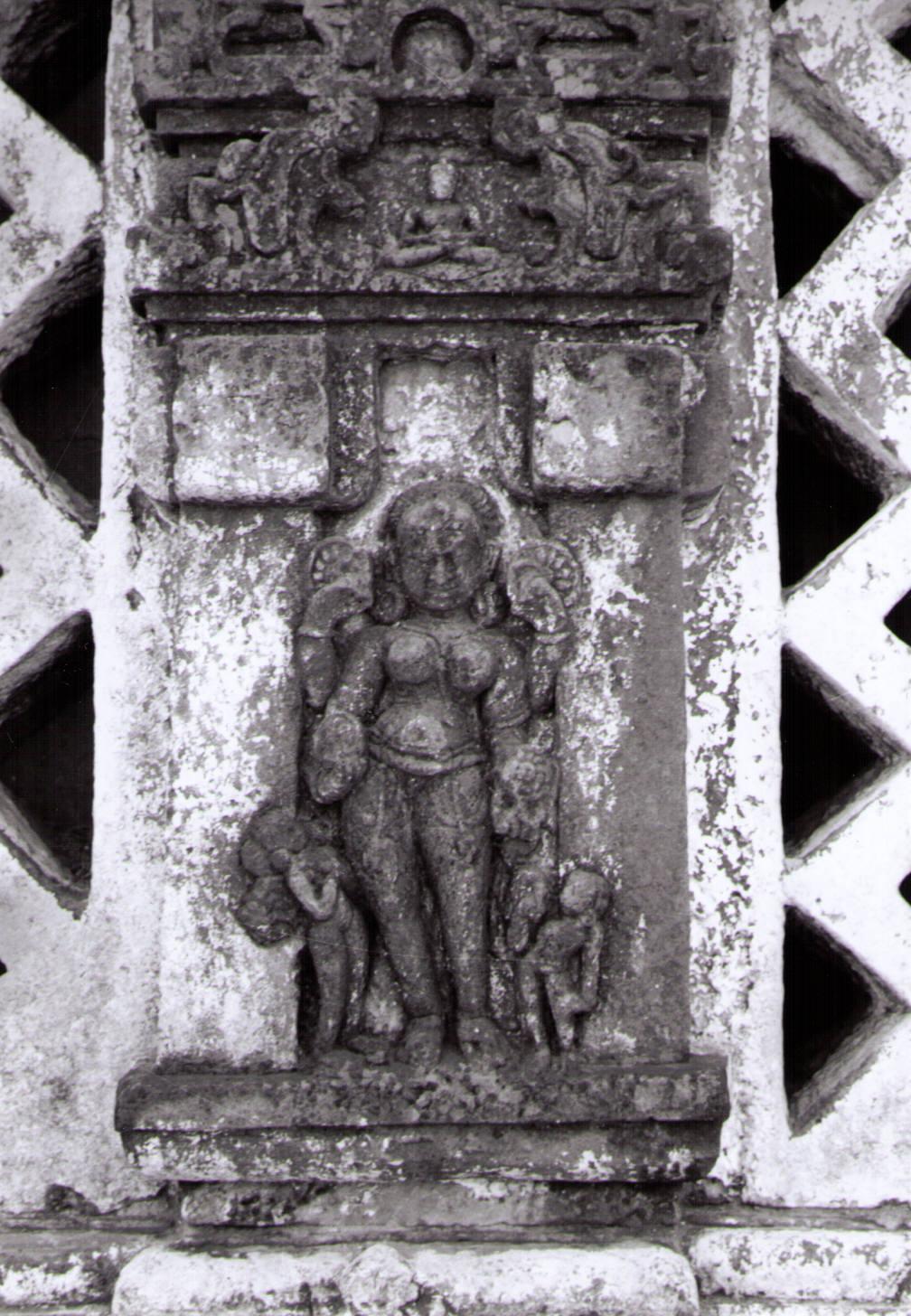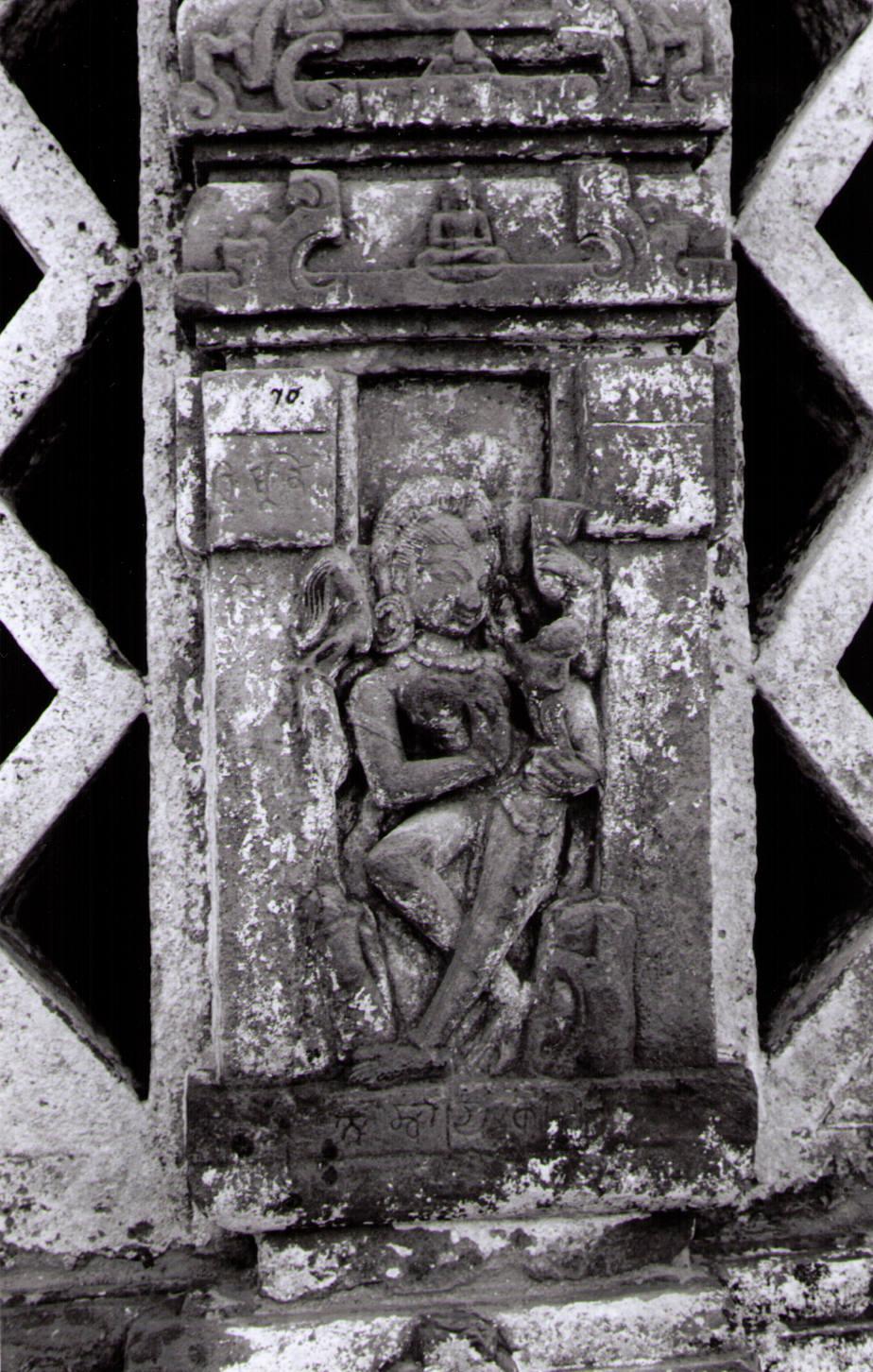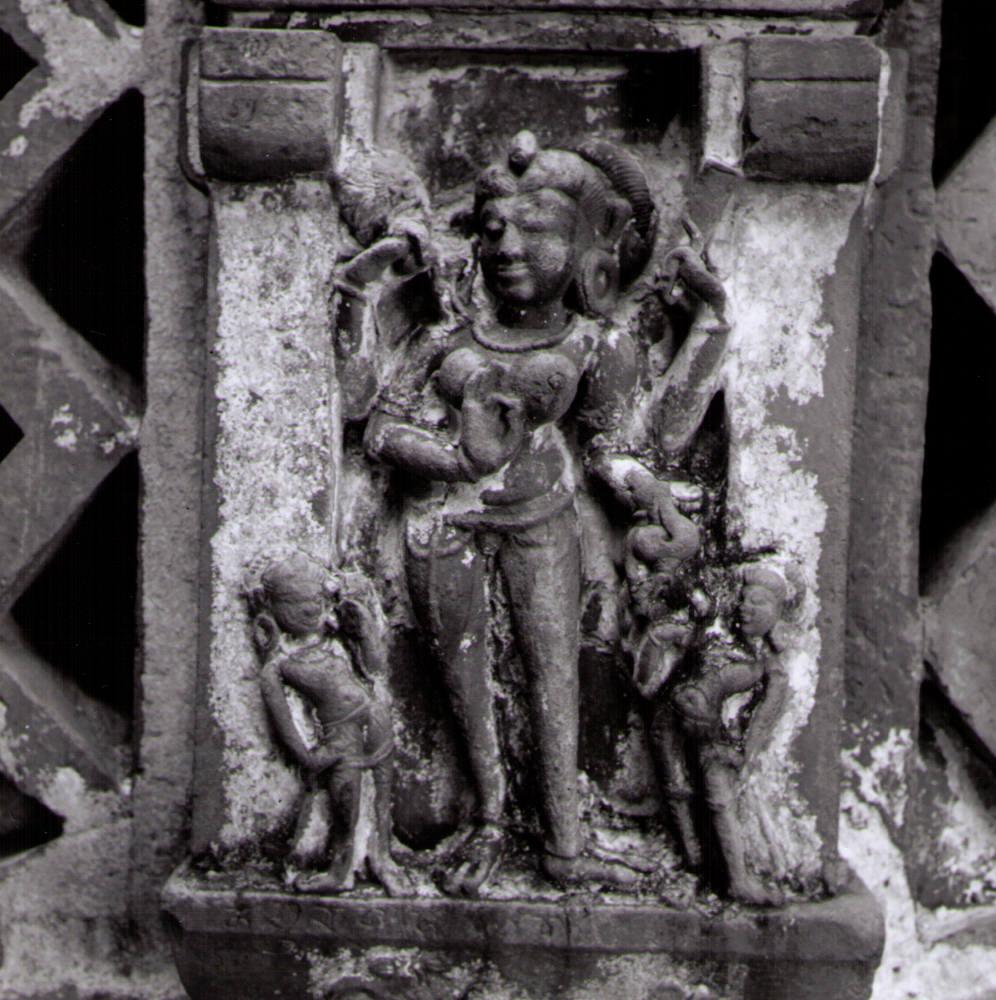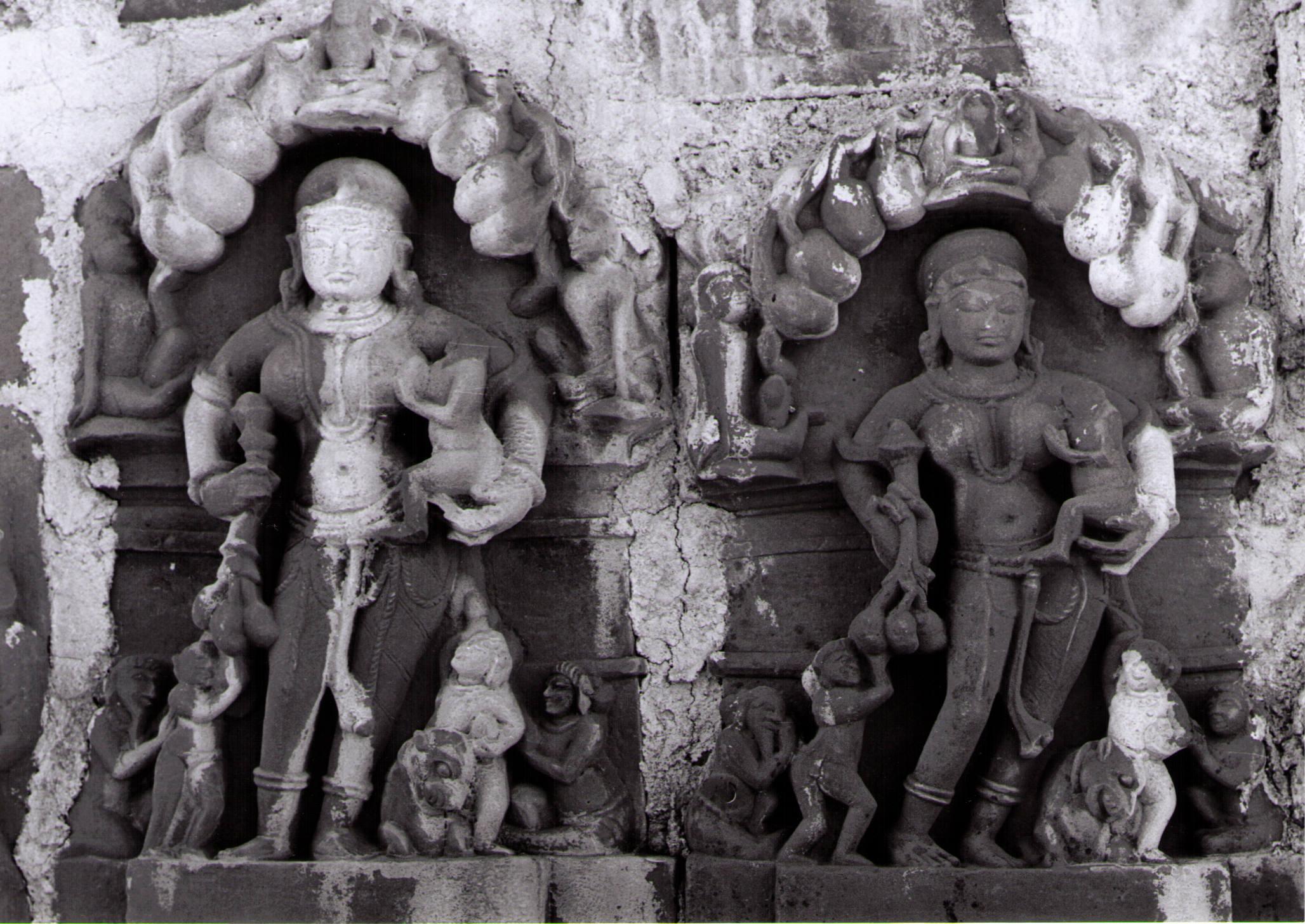
The essay was published in Berliner Indologische Studien No. 13/14. 2000, pp. 273-337.
§ 10. List of Figures and Notes (IV)
 |
Fig. 15 |
 |
Fig. 16 |
 |
Fig. 17 |
Figs. 15-17. § 5. Three niche figures of Deogarh Temple No. 12. A.D. 850-900. Fig. 15 published Tiwari Ch: pl. 21, fig. 1. - Fig. 15 (Cakreśvarī: JID, fig. 55), fig. 16 (Ambikā: JID, fig. 58) and fig. 17 (Sarasvatī: JID, fig. 52). The male figure to Cakreśvarī's proper right is a cakrapuruṣa (JID: 105) rather than a Garuḍa in human form (Tiwari Ch: 35a). |
 |
Fig. 18 |
 |
Fig. 19 |
Figs. 18-19. § 5. Two standing Jinas, fig. 18 a non-Pārśva at Bhilsa (now Vidisha) and fig. 19 a Pārśva in Udaygiri Cave 1. A.D. 950-1050. - The string courses above indicate that the two standing Jinas belonged to two tritīrthika.s with upper sections (cf. JID: fig. 264). The socle deities (Ambikā/not identified) are worthy of note. The motif of the two seated figures on lotuses flanking the socle deities (fig. 19: worshippers; fig. 18: probably also worshippers) is without close parallels. Refer for two Jina images (fragments) with single (= central) socle deities to Bhattacharyya Pa: pls. 17/18 and 21; p. 173. The Jina of pl. 21 is described as “seated“, and probably both Jinas were seated. - Photo, fig. 18: Herbert Härtel. Photo, fig. 19: Gritli von Mitterwallner. |
 |
Fig. 20 |
§ 6. Ambikā from Central India. Ht. 55.8 cms. Inscription. A.D. 800-900. Part of the image in the photo in deep shadow. - No complete back slab; no traces of hair-dress (i.e. no traces visible in the photo); face disfigured; left hand broken; head of the seated child gone; right hand of Ambikā holding small mango bunch; second child (sex not shown) with money bag in its left hand; style of the image clumsy. Inscription: kāritaṃ paratra-bhaiteḥ (read °bhīteḥ) rājñā Gaṅgavarmmaṇā. “Caused to be made by King Gaṅgāvarman out of fear of the beyond“. I am grateful to my colleague Gouriswar Bhattacharya for reading the text. No miniature Jina (cf. Mankodi Am: 98) and no reference to the Jaina community in the inscription. The iconography is clearly Jaina. - Photo: Spink & Son Ltd., Two Thousand Years of Indian Art: 56. |
 |
Fig. 21 |
§ 6. Two Ambikās in the Jaina compound at Deogarh (Wall-Section I: JID, fig. 392). A.D. 950-1050. Published Tiwari Am: fig. 28. - Each image shows lay worshippers in its bottom zone (two plus two, the males with beards). At head height there appear monks (also two plus two), turning their faces inwards and seated in a peculiar fashion. Ascetics (Jaina and non-Jaina) and lay followers are often depicted in this posture. Refer for the posture and for the ācārya cycle in general to Bruhn Ac: 186 and Bruhn Gr I: 247-248. Two children are depicted on the ground (e.g. compare Mankodi Am: figs. 4 and 3). The composite mangoes - bunch of fruits at the lower end, stylized flower at the upper end - are worthy of note (Tiwari Am: fig. 41, etc.). - Author's photo; Bruhn Ar: 1633. |
 Prof. Dr. Klaus Bruhn
Prof. Dr. Klaus Bruhn